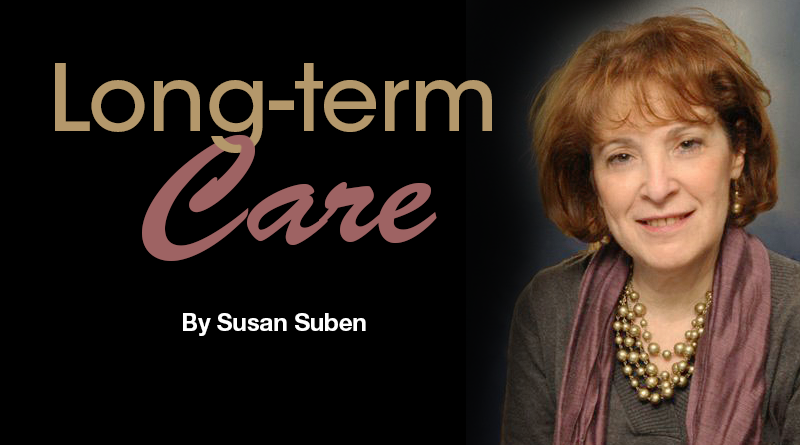The Benefits of Serving Your Country
By Susan Suben
In 1967, my friend’s soon-to-be husband tried to enlist in the army during the Vietnam War. He was rejected due to the fact that he wore “coke-rim” eyeglasses and was considered legally blind. If he lost his glasses in battle, he would most likely be killed.
Two weeks after going to his local selective service center, right after President Johnson issued an edict for more troops, he received a letter informing him he was being drafted. He was in Vietnam for one year and luckily made it back home.
Over the years, he was a successful businessman, raised three children and led a happy life. When his wife suddenly died, behaviors that were previously ignored became more prominent and disruptive in his daily life — obsessive compulsive behavior, small fits of anger and nightmares. He scheduled an appointment at the VA where he received all of his medical care. After a thorough evaluation, it was determined he had been suffering from PTSD for years and the tragic death of his wife exacerbated the symptoms. He applied for and was able to receive disability income from the federal government in addition to his Social Security. He found out that he was also eligible for long-term care benefits.
Many veterans who fought in Vietnam, Desert Storm and other US conflicts do not give enough credence to the consequences that these wars can have on their emotional, physical and social well-being. If you are a veteran, there are many benefits that can compensate and assist you with your medical needs. These benefits can fill a gap in your retirement planning.
Here is how the process works in regard to disability compensation. The Office of Veteran Affairs will review your medical requirements. Based upon this review, you will be placed in an enrollment priority group ranging from 1 to 8. This placement is based upon such factors as your disability, discharge status, active or non-active duty, etc. Each group allows you to be eligible for certain health benefits with priority group 1 being the most comprehensive.
Care can include preventive care, hospital services, mental health, home health care, geriatrics and extended care, medical equipment, dental care, hearing aids, eyeglasses and hospice.
I would also like to focus on another benefit that pertains to long-term care.
The VA administers an underutilized often unknown benefit called “Aid and Attendance.” The Aid and Attendance Pension is a benefit that is available to “veterans, their spouses and widows to help cover living expenses and ensure quality of life when facing a long- term care illness. It is a tax-free pension.:
This year, the pension pays a maximum of $2,266/month or $27,192/year to married veterans; $1,911/month or $22,932/year to single veterans; and $1,228/month or $14,736/year to a surviving spouse.
2020 Aid and Attendance qualifications require 90 days of continuous active military service of which one day is during a war but combat is not required. Dates of war include WWI, WWII, Korean War, Vietnam War and Persian Gulf War. Discharge from the US Armed Forces cannot be dishonorable. You must be disabled and require assistance with your activities of daily living, such as eating, bathing, dressing, etc. You would have to be living in an assisted living facility or nursing home or receiving home care in your home or getting assistance from a family member or friend in your home.
To qualify financially, you would have to satisfy asset limits that pertain to your stocks, bonds, annuities, etc. and VA income limits, but your home, car and personal property would be excluded.
Applying can be a bit daunting but well worth the effort. You can seek assistance from a VA social worker often found through the local agency on aging or a specialized attorney. Each state has its own pension management center that processes Aid and Attendance applications. The key forms are VA Form 21-527EZ for veterans and VBA-21P-534EZ –ARE for survivors. The documents you will need include: recent tax return; health insurance provider numbers; Social Security numbers; discharge or separation papers (DDForm 214); marriage certificate; social Security award letter; bank and financial statements pertaining to stocks bonds, annuities, etc; diagnosis, prognosis and care plan from primary doctor; medications, medical bills, etc.; and letter from a facility if you reside in one.
The application process can take up to 12 months. To get additional information about your eligibility or to apply, you can visit va.gov or call 800-827-1000.
All of the available VA benefits can be of enormous value for your health and long-term care needs especially if you haven’t done any long-term care planning. Aid and Attendance can make a big difference in your family’s financial picture as well as the well-being of your caregiver. Don’t hesitate to find out what you may qualify for. You served your country, now let your country serve you.
Susan Suben, MS, CSA, is president of Long Term Care Associates, Inc. and Elder Care Planning. She is a consultant for Canandaigua National Bank & Trust Company. She can be reached at 800-422-2655 or by email at susansuben@31greenbush.com.

